Testing solutions for the electric vehicle market, whether for land, sea, air, or space applications, need to address not only battery ultrasonic or laser bonding tests but also all related modules and systems, such as the Battery Management System (BMS), OnBoard Charger (OBC), inverter, and the electric motor itself.
Author: W. Gueli
 Electric Vehicle Modules
Electric Vehicle Modules
In 2023, electric car sales nearly hit 14 million units, with 95% of which in China, Europe, and the United States. Although sales are increasing globally, they are still significantly concentrated in these reference markets: around 60% of new electric car registrations took place in China, 25% in Europe, and 10% in the United States. In the first quarter of 2024, electric car sales continued to be strong, increasing by about 25% with respect to the same period in 2023, reaching over 3 million units. However, sales remain limited even in countries with well-established automotive markets like Japan and India1.
Electric mobility isn't just about cars
Technological advancements in high-speed efficiency, compact size, improved acceleration, and reduced motor weight are fueling the growth of the electric motorcycle market. This market has grown significantly due to the demand for eco-friendly transportation and strong government support, especially in developed countries.
One of the main drivers of growth in this industry is the adoption of higher-capacity batteries. Currently, there are three main types: lithium-ion, lead-acid, and nickel-metal hydride. Lithium-ion batteries are still leading the market due to their high performance, greater power output, and light weight, but other materials are on the horizon.
 Examples of Electric Vehicles: Beyond Cars
Examples of Electric Vehicles: Beyond Cars
The overall battery design is constantly improving, enhancing range, lifespan, recyclability, and sustainability thanks to ongoing progress in material research and development.
EVs and Batteries: An Unbreakable Connection
Many electric vehicle (EV) owners think the "battery pack" in their car is a single unit, but it's actually made up by numerous individual cells.
Battery cells are the fundamental building blocks. Each one stores chemical energy and comes in cylindrical, pouch, or prismatic shapes. Cells, and therefore batteries, come in various chemistries, with lithium-ion being the most common. Each cell can output between one and six volts.
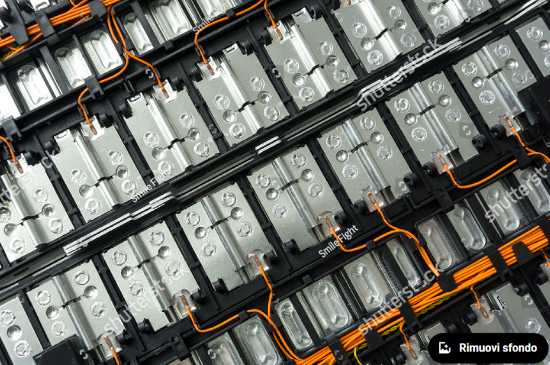 Battery Pack for Electric Vehicles and Cell Connections
Battery Pack for Electric Vehicles and Cell Connections
Cells are connected using current collector plates to create battery modules. A module consists of several cells linked in series or parallel, forming a unit that generates the needed voltage and energy capacity.
These modules are then put together to form the complete battery pack. The pack can include additional components like the Battery Management System (BMS), which handles monitoring and thermal management. The BMS protects the cells by keeping track of key parameters such as voltage, current, and temperature, featuring a safety system to shut the battery down if specific safety thresholds are exceeded. Under BMS supervision, the switching system can disconnect the main battery from the vehicle's high-voltage bus, ensuring constant communication among the onboard components.
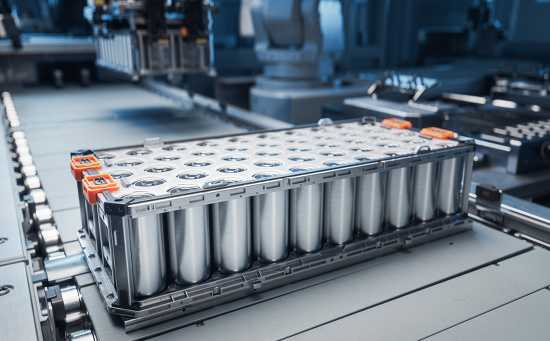 Battery cells for electric vehicles arranged in modules
Battery cells for electric vehicles arranged in modules
The Battery Thermal Management System (BTMS) manages the battery's thermal energy and temperature, heating or cooling it as needed. Thermal interface materials (TIM) are used between battery components to bond them, even out temperatures, while assisting the BTMS in thermal management.
Battery Production
Battery pack production starts with making individual cells. The components of each cell are assembled, placing a separator between the anode and cathode, and then immersed in an electrolyte solution. This assembly is enclosed in a rigid casing. Before being built into modules, each cell undergoes specific tests to ensure there are no electrolyte leaks, which could cause fires or explosions, and no moisture infiltration. It’s essential for cells to work properly and deliver the required power within specified tolerances to maintain battery performance.
The cells are then combined into modules, which are arranged in series or parallel within a sturdy final housing, the pack, protecting them from shocks, vibrations, and other environmental factors. Once the battery pack is assembled, further testing and adjustments are carried out, including power output checks and ensuring all electrical connections work correctly.
These tests guarantee the battery reliability and safety, regardless of the device where it is mounted. Understanding its operating conditions is key to preventing failures and optimizing performance. Testing also plays a vital role in streamlining production, controlling processes, and managing costs by avoiding waste and rework.
ACIR Testing
To ensure a high-quality battery pack, all cells must undergo a strict process to measure their internal resistance (IR). Making a battery pack from cells with different IR values, would lead to uneven current flow and temperature variations within the pack, which could be extremely dangerous and must be avoided.
There are two methods to measure IR: using either direct current (DC) or alternating current (AC), as follows:
- DCIR (Direct Current Internal Resistance)
- ACIR (Alternating Current Internal Resistance – typically at 1kHz with a 100mA current)
Following the electric vehicle industry standards, Seica has developed a specialized platform for testing individual cells. With the Mini 80 and Mini 200 systems, Seica offers both manual and automated solutions for ACIR testing. The Mini 80 can be integrated directly into an automation line, while the Mini 200 is designed for manual testing of individual cells in their shipping boxes.
Battery Testing
The electrical connections between battery cells are critical for both the performance and safety of the battery, making connection testing (wedge (ultrasonic) or laser bonding test) a crucial part of the manufacturing process. A key factor to check is the connection resistance: precise measurements in the milli-Ohm or micro-Ohm range are required to ensure that connections are secure. A missing or faulty connection can impair the battery's efficiency and, over time, lead to serious failures, including the risk of fire.
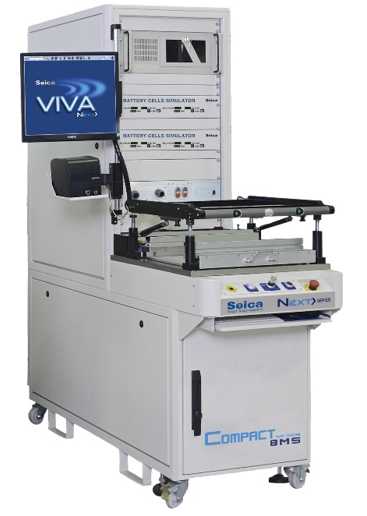 Compact BMS – Seica
Compact BMS – Seica
While Automated Optical Inspection (AOI) might seem like an easier option, it can't detect issues in the interconnections between cells (bonding test). AOI essentially captures an image of the bonding and uses algorithms to judge its quality. However, it's a subjective method that can't guarantee the resistive parameters critical for the battery pack's reliability and safety. Where battery quality is a “mission critical” parameter in a very heavily regulated industry such as transportation a physical/contact test still remains a highly sought after method to ensure safety.
To meet the requirements of high-volume production, using an electrical flying prober is the most effective approach. The most advanced flying prober can perform extremely accurate parallel Kelvin tests on more than 16 cells at once, reaching speeds of over 2,000 cells per minute. These systems are capable of measuring wedge bonding resistance with great precision, detecting values as low as 10 µOhm with a resolution of 0.5 µOhm. This level of accuracy ensures consistent and reliable results, along with full traceability for each connection.
Flying probe systems are highly flexible, capable of handling various battery types, but they need to be large enough to accommodate even the biggest formats. High productivity isn't always necessary; in R&D labs or repair centers, a system with lower throughput might be sufficient, though precision should always remain a priority.
To meet the increasing demand for testing connections within battery packs, Seica has developed a new range of flying probe systems: Pilot BT, Pilot BTV, and Pilot H4BT.
The Pilot BT system can perform precise parallel Kelvin tests on more than 32 cells simultaneously from the TOP side of the battery pack, reaching speeds of nearly 4,800 cells per minute at full capacity. It features a large test area (1200 x 1200 mm) and uses a Bosch system for battery handling.
 Pilot BT – Seica
Pilot BT – Seica
For more complex battery packs that require simultaneous access from multiple sides, Seica has introduced the Pilot BTV (Vertical Battery Tester), a flying probe system that provides automatic access on three sides. This is particularly useful for "double" battery packs that need bonding tests on both sides and access to the BMS on the TOP side.
 Pilot BTV – Seica
Pilot BTV – Seica
For prototype labs or production lines with a high mix of products and medium volumes, Seica offers the Pilot H4 BT. This system has four independent axes for fast and parallel testing of two bondings at once, with a test area of 800 x 540 mm and a speed of over 600 tests per minute.
Battery Management System
The Battery Management System (BMS) is a key component, crucial for the performance, reliability, and longevity of batteries. To ensure each BMS meets its specifications, a complete functional test is essential, which involves simulating the actual operating conditions the BMS will face.
The recommended method is to use cell simulators capable of generating a floating, programmable voltage between 0 and 5 volts, mimicking the cell under normal, under-voltage, and over-voltage conditions. Since even minor voltage changes (fractions of a millivolt) can significantly impact the cell's State of Charge (SoC), the simulator needs to deliver precise voltage and accurately measure the actual output.
To test the BMS’s temperature sensing function, which typically relies on NTC (negative temperature coefficient) or PTC (positive temperature coefficient) thermistors, you'll need a tool that can provide variable resistance across different ranges. Additionally, full performance testing often requires the use of CAN and LIN automotive communication protocols.
Seica’s Compact BMS is equipped with specialized tools and battery cell simulators designed to carry out comprehensive functional testing of the BMS by accurately simulating the cell’s behavior.
OBC and Inverter
The OnBoard Charger (OBC) is another vital component in electric vehicles, responsible for charging the battery pack while the vehicle is stationary. It converts AC voltage from the charging station into DC voltage to charge the batteries. Since the OBC handles high power levels, the test system must be capable of assessing both high-voltage and low-voltage operations.
The inverter module works in the opposite direction, converting DC voltage from the battery pack into three-phase AC to power the electric motor. It also regulates voltage to control the motor’s power and torque and recaptures energy during braking through the Kinetic Energy Recovery System.
To thoroughly test these modules, Seica has developed two specialized systems based on the Compact MULTI platform. The OBC module is tested using a specific test program and a fixture that connects it to the Compact Multi-OBC system. This system checks the module’s high-voltage insulation, performs safety tests, generates high-power single/three-phase AC voltage, monitors and controls power output, and simulates the battery pack.
It also calibrates internal sensors under full power, performs leakage tests, and verifies the integrity of connectors (e.g., checking for bent pins). The system integrates easily with the company’s MES (Manufacturing Execution System).
For the inverter module, Seica offers the Compact Multi-Inverter. The testing process is similar to that of the OBC, but instead of simulating the battery pack, the system simulates the electric motor. Seica’s innovative approach uses a balanced three-phase load with an inductive Y-connection, minimizing power dissipation while allowing for testing at maximum current, leading to significant energy savings.
Electric Motor
The electric motor transforms electrical energy from the inverter into mechanical power to drive the vehicle’s wheels, with speeds that can easily exceed 20,000 RPM. Testing all aspects of an electric motor’s performance requires specialized knowledge and a custom-designed testing system.
The test involves using a torque sensor on the motor shaft to measure the force the motor can handle at maximum speed. To simulate the load (the vehicle), a second motor is used, either acting as a load (braking motor) or as a motor to simulate regenerative braking. In this setup, the braking motor functions as a generator, feeding the generated energy back into the power grid to save energy. The test also assesses the motor’s efficiency by checking for energy loss and detecting any vibrations.
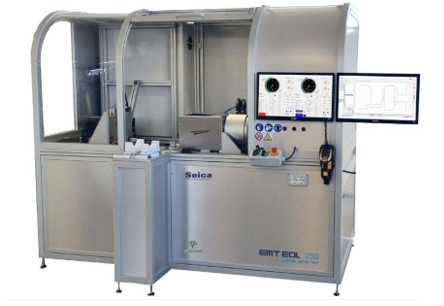 Electric Motor Testing, EMT EOL 250 System, Seica
Electric Motor Testing, EMT EOL 250 System, Seica
When simulating regenerative braking, the motor under test acts as a generator, sending energy back to the inverter to recharge the battery.
Seica offers the EMT EOL line for electric motor testing, which is specifically designed for this purpose. With three different models (250/600/3000), the system can handle a wide range of electric motors. These systems are built on Seica’s VIP hardware and software platform, ensuring they can be seamlessly integrated into production lines, traceability systems, and company MES, supporting Industry 4.0 standards.
Meeting the Testing Challenges in Electric Vehicles
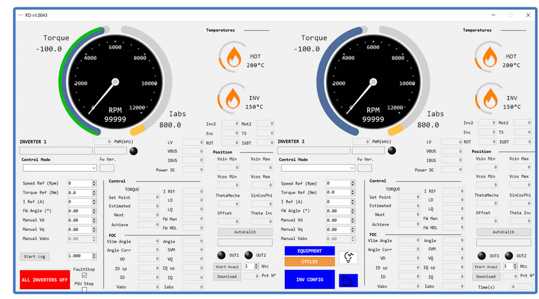
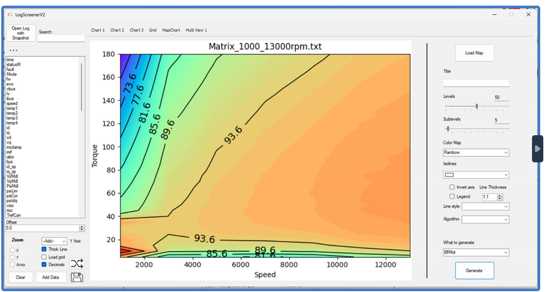 Electric Motor Test Software
Electric Motor Test Software
This article emphasizes the critical role of research and innovation in addressing the testing challenges in the electric vehicle industry.
EV Manufacturers universally agree on the need for high energy density, long battery life, and stringent safety standards.
Achieving these goals requires consistent and controlled production processes, with thorough testing at various stages to ensure that products meet the necessary functional and quality standards.
1 - Global EV Outlook 2024, IEA Publications, International Energy Agency